The Wind Rises (2013): Separating Fact from Fiction
Studio Ghibli‘s Hayao Miyazaki has threatened to retire many times, but it seems like this might be definite. “I am quite serious this time” Miyazaki noted, mentioning his failing eyesight as rationale. On New Years Day 2014 there was some chatter that the Studio Ghibli director may have withdrawn his statement from the 2013 September Venice Film Festival about The Wind Rises being his last film. His colleague, Toshio Suzuki, claims Miyazaki is writing a samurai manga. So yes, he’s still retired. He has moved away from animation though.
This article is not here to get caught in the sea of reviews or the hot controversy debate but to decipher whether the on-screen depiction of Jiro’s character in The Wind Rises is accurate to his memoir: The Eagles of Mitsubishi: The Story of the Zero Fighter . I intend to offer insight as to whether Miyazaki’s creative choices were in service of Horikoshi’s character, or downplaying him. If you have not seen the movie, unless you want to be spoiled, I would stop reading here.
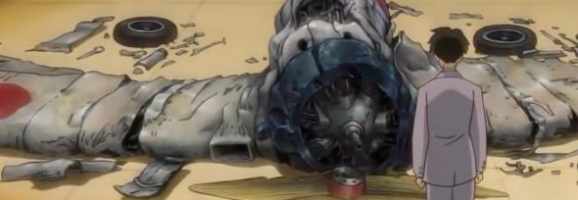
From a young age Jiro Horikoshi describes himself as socially withdrawn but good at solving problems. He generally disliked conflict unless the arguments could be discussed in a constructive way. He was inspired by European aircraft from a variety of magazines and this often carried over into his dreams where he would see airplanes of his own invention. The memoir makes no mention to a Mr. Caproni, although perhaps this is a nod to Miyazaki himself. Not only does he share Jiro’s love for planes but as also shown in Porco Rosso he seems drawn to Italian ones. “Ghibli” refers to the Italian name used for Saharian scouting planes in World War II, after all.
If anyone else thought it was strange that Caproni appeared in all Horikoshi’s dreams, your intuition would be ringing true. Many films integrate the archetype of the wise man: Gandalf from Lord of the Rings and Dumbledore from Harry Potter, but did The Wind Rises need it? It’s possible that since Horikoshi lived a reserved lifestyle Miyazaki felt he could use a father figure to give Jiro guidance. This section indicates that the first ten minutes of the film are fairly accurate to Jiro’s life, although it is unlikely he would stand up to a bully and get in a fist fight. To allow time to elaborate on other characters in the story, this prologue could been five minutes shorter, as it did nothing to advance the story besides establish that Jiro in The Wind Rises has a sister and literally dreams about his love for aircraft.
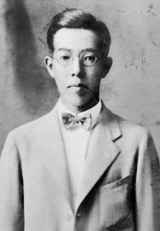
Jiro’s interest of planes faded in the part of the film we don’t see. In fact, instead of being inspired by Caproni the real life Jiro decided to pursue planes in University after talking to a friend of his brother, whom was a professor at the newly created Department of Aeronautics in Tokyo. Like most teens he had no idea what he wanted to do, and that was the tipping point. Sadly, there is no mention of Jiro’s brother besides this.
This brings forth another area where Miyazaki took creative license. Why did he make Jiro have a sister? Miyazaki is known for creating confident, self-sufficient heroines in his movies. It’s possible he wanted to contrast the overwhelming male cast of pilots and Mitsubishi staff. This is a pretty understandable idea and adds a necessary Ghibli dose of cuteness to the film that otherwise would have been very grim and masculated. Considering Miyasaki’s Jiro has been criticized as being a flat, unsympathetic character it may have been worthwhile to include Jiro’s career dilemma to make Jiro come across as a more down to earth person.
The Wind Rises was actually a combination of two different creative works with the bonus of Miyazaki’s personal flare. In an interview on the Japanese TV Show “Oosama no Branch” of August last year, Miyazaki states the character of Naoko was lifted from the woman Setsuko in the Hori Tatsuo novel The Wind has Risen (1936-7). It follows the heroines experiences in a turberculosis sanitarium in Nagoya and the man who falls in love with her. In the novel an interesting metaphor of “a mackerel sky” is used. Was this where Jiro’s love for mackerel came from? While the beautiful 1923 earthquake scene was based off real events but not described in Jiro’s memoir, it remains one of the most poignant scenes of the film. It shows the audience a lot of Jiro’s likable qualities like a selfless desire to help others, a sharp mind and the ability to stay level-headed in a crisis. Even at 72 Miyazaki clearly still has his head screwed on straight.
The Story of the Zero Figher is 80% plane design ideas, measurements and stories surrounding Jiro’s career. There’s so much focus on the construction of the planes there’s a measly 20% left for autobiographical material. This is an obvious indicator of his unrivaled passion for the flying machines, something which is brought to the screen perfectly. The majority of the information about the challenges Jiro met while designing his planes; the adventures he pursued as part of his work (traveling the world, mentoring students) and the thrill of watching test flights seem like they’re taken straight from the book. Viewers may have only witnessed his travels to Germany, but he also visited England, France and America in the first five years of his career at Mitsubishi. One crucial element Miyazaki left out when translating these ideas to film was the self-doubt Jiro experienced while he integrated himself into the company. Horikoshi distinctly recalls wondering why his employers would want an inexperienced guy in charge of creating their planes.

His plunges into self-doubt and personality flaws could have added an extra dimension to the Jiro portrayed in the film. In Studio Ghibli’s work we usually see characters express their inner monologues by talking to themselves, like in Kiki’s Delivery Service (1989) or Nausicaa and the Valley of the Wind (1984). This wouldn’t have been difficult to add if some other aspects – like the majority of the Caproni cameos – were taken out.
The unrivaled importance placed on working hard is something Japanese culture still shares and the pressure would have been even worse back in World War II time. Considering how intently Jiro’s passion for his job is written we seldom see any consequences for it. In reality Jiro had a habit of working himself sick and on occasion had to take time off. The first time this happened was during the design of the Prototype 12. It took the wise words of a superior to get a reluctant, stressed Jiro to come to his senses and prioritize his health over work. If this realization was integrated into the film, perhaps in the scene when Jiro goes to the hotel for a break, we could have seen Jiro develop as a character. Recognizing that you can’t work without your health is a lesson all adults learn at some point, for better or worse.
Miyazaki’s Jiro has been criticized for never questioning the morality of creating planes designed for killing others, but was the real life engineer any better? Jiro was so surprised to see a newspaper clipping of how the Prototype 96 had taken down enemy planes in China of July 1937 that he excitedly showed his family. It is difficult to determine the origins of his excitement from Horikoshi’s description. Was he feeling very patriotic of Japan or was he simply proud of the fact his plane was in the media? Jiro appeared to have reservations towards his employers. He often felt under pressure by the Navy’s many, specific demands for aircraft and wondered why their standards were so high. It became such a concern that during an important conference at the Aeronautical Establishment Jiro, half knowing it wouldn’t achieve anything, insisted the Navy removed some of their specifications. Sadly, his request was rejected. The seemingly impossible task ahead was rubbing off on his workmates, and Jiro’s team returned to Nagoya looking “grave”.
The next two months of being appointed Chief Design Engineer was lonely and isolating, as Jiro could only communicate his ideas to a select few, and tumbled back and forth with ideas in his head. It was so distracting it followed him home on the train and through the front door. It disrupted sleep, and at times “I could not sleep at all […] I was told a nightcap at bedtime would help, but I was born a poor hand at drinking”. By the end of 1937, the main problems with the design were organized in Jiro’s buzzing mind. Over 3000 drawings were completed to manufacture the airframe of the Prototype 12, which Jiro had to check and adjust when needed. In Spring of March 1938 the drawing needed for the beginning of construction was released.
In June 1937 his son was born. Jiro noted he was not able to spend much time with him until the New Years Day holiday. When the fateful day arrived he was able to reclaim some much desired family life. Even then, his mind swirled with self-doubt, of whether he was capable of meeting the anal standards of the Navy. It is clear from the text that Jiro had two children and lived with his wife, although there is little more said about them. Was it a good idea to portray the budding marriage of Naoko and Jiro in The Wind Rises with no prospect of children? Would it have been more effective to display Jiro in the context of a family? In order to develop the characters a satisfactory amount, the smaller the confines of the story the more the characters can be developed within it. In this case, the film did a good job of making us care for Jiro and Naoko’s relationship, even though their transition from friends to fiance was abrupt and in need of a montage. If Miyazaki had attempted to portray a whole life span of their marriage and children it would have been too much to cram in.
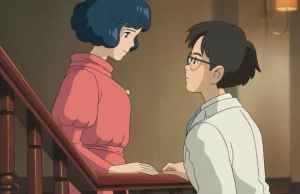
Planes have to be checked countless times so it wasn’t until September 14th 9:06am when the idealized version of the Prototype 12 swept the skies from the Kagamigahara airfield, still wet with morning dew. Jiro remembers being one of many in his crew whom watched with tears rolling down their faces. Sadly, when a pilot went missing in a test flight the Prototype 12 was suspended, although Jiro felt this was fitting considering the tragedy it had brought. “I felt very bad about the accident” Jiro wrote “I offered a silent prayer and told Mr. Okuyama that our aeronautical engineering gained a valuable milestone in experience because of his sacrifice”. On 17th April 1941, Jiro lost a pilot he admired and personally knew to one of his planes: Lieutenant Manbeye Shimokawa. This was more difficult to deal with and Jiro was overcome with emotion at the funeral. As he remembered Shimokawa’s bravery, uplifting smile and his keen desire to learn, tears streamed down Jiro’s face. He was a decent man, one of the few whom had acknowledged Jiro’s dedication to his trade “Thanks to you the Navy can be proud of this machine”, he had said. It’s clear from these passages Jiro is a caring, empathetic person, although perhaps he is not so concerned about the world at large yet.
At the end of 1940 the Prototype 12 was accepted into the Navy. Since it was the Japanese year of 2600, it was named “Type Zero Carrier-Based Fighter, Model 11”, more commonly known as “Zero fighter”. The name made Jiro feel strange. Jiro says he never imagined Japan would ally with Germany and strike against the US and England, or that it would become one of the most powerful planes in history. The news of the Zero causing such a military impact was a great shock to Jiro, even though he was commemorated for his efforts. It was only after the war when Jiro received a full report of the damage the Zero had caused, which came as a surprise. In an invasion of Chungking, 13 Zeros took down 27 Chinese fighter planes in 10 minutes: one suffering a hit fuel tank and three with minor damage. The newly improved Zero 32 underwent tests in 1941.
Jiro’s doubts about Japan’s stake in the war became clearer the worse the situation became. When the USSR was formed and invaded in 1941 Jiro was at home nursing his sick, 20 month old, second son. He learned of the state of the war in the newspaper at the doctor’s, and questioned Japan’s alliance to Germany, as Germany’s future “looked gloomy”. “Your son will be fine soon but the symptoms of Germany are very dangerous, aren’t they?”, the Doctor said. When Jiro fell ill in October he visited his mothers hometown and went out for walks during the day. It allowed him to nearly forget the international turmoil and work for a while, something which appeared to be a relief for him. The media frantically exclaimed Japan’s state of emergency, and Jiro acknowledged silently “It looks as though we can’t avoid war”. When he returned home to Nagoya, Jiro’s mind was troubled, begrudgingly anticipating re-entering the workplace.
Horikoshi’s did not learn about his planes impact until after the war, when the recordings for December 7 Pearl Harbour bombings were announced. A famous American reporter wrote in the April 1949 issue of Air Trails magazine “…Moving in complete secrecy, [the Japanese] had designed, built and used a striking force of one of the sweetest airplanes of all time. […] the biggest mystery ship of the Second World War”. Sentiments like how it’s easier to pick up a girl than defeat a Zero were a source of confusion for Jiro. He thought his plane was over-hyped and praise was blown out of proportion, although he could not help but feel proud of his contribution to his country. “It is a great pleasure for me to know that the Zero fighter, to which I devoted half of my life, is still alive today, not only in our technology, but also in the hearts of the people of Japan”.
In April of that year, as Jiro was immersed in the creation of his next project, an enemy plane dropped a fire bomb near Jiro’s house. As he watched smoke billow from his window, panic and depression wallowed his spirits. Pessimism of the war’s prospects pooled his insides. It seems the true meaning of his destructive Zeros and war became clear for him. In October 1944 Kamikaze’s became known to the nation via the newspapers and the Zero was announced soon after to be part of this operation. Jiro was approached by the press to write a short essay on the Kamikaze, but he declined. He found it too emotionally difficult to think when he looked at photographs of smiling pilots boarding Zero’s, knowing they were doomed to death. Sobbing, the only sentiment that encouraged him to put pen to paper was dedicating his writings to the families who had lost their loved ones in the war. In the haunted depths of his mind he wondered why Japan had not just given up the war, and why they had gone to such measures with the Zero’s.
In 1945 bombings increased in intensity and frequency. Jiro’s house was unaffected, but he remembers walking down the street and watching many areas being burnt down. Smoke rose so high that trails from planes traced lines across the horizon. His family moved to Matsumoto, transportation and communication was disrupted and reconstruction was slow. Jiro appeared to be both incredibly proud and deeply ashamed of his creation. He could admire its design and ability from a technical standpoint, but turn away at the destruction it had caused in the wrong hands. In 2011, Miyazaki said when he learned that Horikoshi had once said “All I wanted to do was to make something beautiful”, he knew he had found the lead character for his next film. It is this haunting despair and conflict of interests that brought Miyzaki to bring Jiro’s story to screens, and yet that anguish was somehow lost in the process. Perhaps it is because the film didn’t cover the dark closing moments of Jiro’s career. There’s only an epilogue where Jiro mourns over his lost planes and loved one, which was not enough to portray Jiro’s tender change of heart and regrets. Tears filling his eyes, Mister Caproni says “You must live, Japanese boy”, reiterating the brilliant quote chosen for the opening of the film by poet Paul Valéry, “The wind is rising! We must try to live!”. If interpreted in a morbid fashion, that moment could imply that young Jiro may have been considering giving up on life, or at worse, suicide.
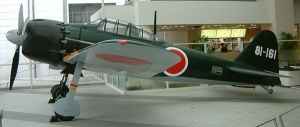
It was a stifling hot day when Jiro skipped lunch and commuted with the landlord’s family in front of a radio. They knew something important would be announced over the air but not many would have guessed it was the announcement of World War II coming to a close. With an overwhelming burst of tears, Jiro knew his career with planes would be over, but would the public’s association of him? He reflected on his career positively, scorning the “foolish steps Japan had taken” and prayed that intelligent leaders would later step forward. Perhaps he blamed the political parties for the death and turmoil because it would have been too hard to admit he had played part in the damage.
There are a still a few mysteries to Horikoshi’s life left standing, and although The Wind Rises loses its way at times, Miyazaki managed to enhance Jiro’s character by emphasizing the love he must have had for his family and his struggle find a balance between sanity, work, love and life. Jiro’s love for planes and career is reflected with impeccable accuracy as this is what Miyazaki likes to do as well. There are many character flaws which could have made for a much darker narrative, and far more interesting character. It is a shame these weren’t incorporated, although it probably would have pushed the rating over the edge to M+ in Australia or R in America. The parents who complained about the excessive smoking would probably start a riot.
While an imperfect endeavour, I found The Wind Rises to be an enjoyable step above Miyazaki’s recent titles like Ponyo (2008) and Howl’s Moving Castle (2004). Miyazaki created a film historically accurate to the times, with a fair share of cute, funny and inspiring moments. It is worth a look for those interested in the World War II setting even if it is not as dark as Grave of the Fireflies (1988). Miyazaki’s ability to make his stories heartwarming is what makes his hated Walt Disney comparison stand to this day. I would like to close this article with a quote by Igor Sikorsky, a helicopter engineer Jiro Horikoshi admired:
“The life of a man who deeply devotes himself to his work is a repetition of more violent ups and downs than those of an ordinary man”
Jiro Hiroshi hopes that readers agree and can remember it’s these moments in between the highs and lows which make life worth living.
Works Cited
Horikoshi, Jiro & Shindo, Shojiro. 1992. Eagles of Mitsubishi: The Story of the Zero Fighter. Translated by Harold N. Wanteiz. University of Washington Press.
What do you think? Leave a comment.




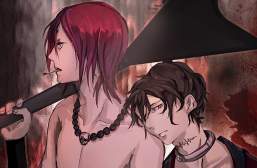

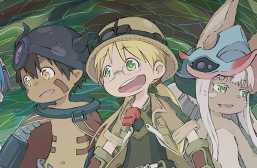
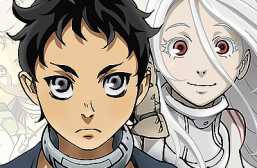
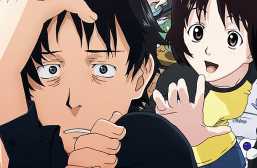
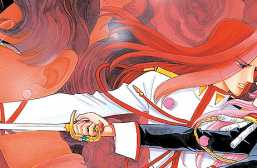
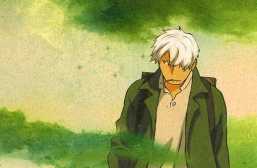
Disney should take notes. Yes, Frozen was great, but it gets boring when you watch it more than once cuz you notice it had a few ‘mistakes’ like not giving real reasons for Ellsa’s powers. Also, instead of making her born with it and making people forget about her powers, it would’ve been better if she was cursed by someone and kept it secret.
I think it’s more that Disney doesn’t think its storylines deserve that much depth considering they are aimed towards children. I agree though, it would have been nice if they revised the screenplay for Frozen at least one more time to gloss out those plot points.
It also would help because Disney movies, given the audience are just as much for the parents as the child.
No offense. I love Ghibili movies, but there is very little explanation for anything ever happening in Miyazaki films. Especially where fantasy, magic, powers, come to play.
I guess a lot of people were looking for more conflict or action, but not every movie needs to be like that. I think it’s worth recognizing, when a film comes out -especially an animated one- that isn’t mostly paint by numbers (pun intended). Instead, we receive an astounding visual journey & heart wrenching story; but films like Frozen or the Lego movie are more likely to be honored.
Not that those films aren’t great in their own right. But every year, the US releases another CG movie, with the same basic tropes; so expertly crafted, that it is practically directing by math now. Calculated emotional ques, characters precisely designed to perfectly fit a role & then move aside. Meanwhile, Miyazaki is still showing us that animated films can be high art, for adults first; not just fun for the whole family. His films consistently remind those adults of their own youth, or dreams & passions they may have long ago set aside. They have a way of igniting new drive in anyone who watches them & making you feel like a new person.
While I absolutely love movies from the likes of Pixar, or Dreamworks; they have undeniably found their niche by exploiting a specific & highly calculated style. It works from them, but it’s not breaking a mold. Knowing his career alone & watching the trailer for the Wind Rises, was enough to make me shed tears. Toy Story or some Disney princess movie has never managed that.
It’s not so much about “explaining plot points away,” but the film’s verisimilitude. Something like Spirited Away may not make “sense,” but its world is entirely believable and fully realized.
Spirited Away works, but consider Howl’s Moving Castle. Beautiful movie though it is, a little bit of exposition would give the plot some much needed clarity.
Miyazaki’s movies are not centered around plot. Hitchcock’s movies are centered around plot. That’s just the way it is. There’s more to filmmaking and storytelling than a straight line between A and B.
Hayao Miyazaki has contributed so much to the world of animation. I eagerly look forward to seeing this film, particularly after reading this article, great depth.
Thank you. I’m surprised you read it considering you haven’t seen the movie, but I’m glad you enjoyed it.
I think it is hilarious that USA critics r moaning about rewriting history or changing facts or glossing over this or that regarding ww2…HELLO lol hollywood has done this with nearly EVERY war film ever made and started by reinventing colombus , then the slaughter of the native americans , then ww1 and 2 and then the gulf wars (vietnam seems to be always prety accurate). Ive seen major hollywood studio films which changed factual characters nationalities just so the hero could be more appealing to the larger audience lol and you know what…thats ok as these are fiction, as the film above which im guessing doesnt have a retarded ‘based on a true story’ sticker lol which basically is a license to lie 😀
Well rewriting of history unfortunately happens a lot. But another factor that people rarely consider, is that we simple just never learned all the facts & have always based our understanding of history, from what media & propagandists have fed us in neat little condensed packets. For instance, few people know that the U.S. dropped the atom bombs on Hiroshima & Nagasaki, with knowledge that the war was going to end soon regardless. Yet they still dropped the bombs, because a calculation was made that less troops would die in that scenario. And example of muddy morality to be sure; but most people never even consider that & merely believe it WAS the bombs that ended the war.
Man, something about his films just trigger something in your mind that draws you in. I just love his films and am really sad he is finished. I was really hoping for another fantasy-based one but that’s ok. I watched Kiki’s delivery service when I was 4 years old and that was my first time to even watch an anime movie. It was just amazing I can’t even describe the way it made me feel. I remember running around with a broom between my legs pretending I was about to take off. Then yeaaaars later I walked into my living room and caught the end of a commercial for a movie that was about to air on Cartoon Network and saw what looked like a flying dragon/serpent and a girl who’s face kinda reminded me of Kiki and I got chills down my neck. Just in those 6 seconds I knew that whatever that movie was, I was going to like it a LOT. I was like I HAVE to watch whatever this is! It was Spirited Away which turned out to be my favorite movie of all time. Favorite movie I have ever watched. Period. I didn’t even realize that Spirited away and Kiki’s Delivery Service were both from the same studio until I did some research on the movies (after watching Spirited Away and looking for more movies by the same creators) and saw that there were a lot of different ones from Studio Ghibli! I watched Howl’s Moving Castle, Ponyo when it came out, and on and on. It’s funny because all of my favorite ones are all the ones Hayao Miyazaki made. He is really good at capturing the mind of a child and how the world can feel to you when you are small. GOSH I LOVE THESE MOVIES WHY MUST THIS BE HIS LAST ONE I REALLY HOPE HIS SON CAN SOMEHOW LIVE UP TO HIS FATHER’S NAME!!!
hmmm.. the protagonist in this movie was a war criminal. the jets he created actually bombed the very US soil. This movie idolizes a character who knew the purpose of his creation, yet everyone seems to have enjoyed the movie and ignore all the facts. Yeah, yeah, I am a big fan of Miyazaki’s work myself, too, seriously. (btw my favourite is Mirai Shounen Konan, which is a very old TV series done by Studio Ghibli). But this movie was pushing a little too far (for me at least).
Is it wrong for a Japanese filmmaker to give what was, in truth, their own views of those events? This would be like saying it goes “too far” to make a movie where Americans are shown taking pleasure in shooting Japanese people in WWII. And yet…it probably wouldn’t even be hard to find such a movie being highly praised in the USA.
Now, that’s not to say that Hayao Miyazaki himself shares those views (ie. the Japanese at the time being quite motivated to expand and conquer). But it looks like he’s, at the very least, telling it as it really was. He’s not arbitrarily inserting a character representing the ‘forward-thinking’ ideologies that are more normalized today. He’s representing a Japanese guy in Japan from back then.
By the end of the movie, it is unlikely that the message of the film will be “we loved war, but we got beat”, or whatever. Because, more than any other country in the world, Japan has been obsessed with telling stories that illustrate one simple and powerful message: WAR IS BAD. Every single Gundam series, every Code Geass, every giant mech anime, they all repeatedly establish the evils and the suffering of war. I don’t think this latest Miyazaki film will stray from that. But neither is it going to shy from the reality of the day.
Yeah, I know its a controversial film, and sometimes history can be skewed in context. Im still going to watch the film, and I may enjoy it, I haven’t watched it yet and I have already taken history into facts and know that the history in this is skewed in favor of idolizing someone who created airplanes for the purpose of war. I know, and it does push pretty far, but the way I see it is this is Hayao’s depiction of it, I don’t have to agree with it to enjoy a good movie.
But, anyone who watches it or is interested in the movie should know what happened historically, so if you show your children this movie give them a brief lesson on what really happened if their old enough (comprehension wise).
War Criminal? really? where was his trial?
So is a war criminal the one that invented the knives, bullets, planes…
Damn, so Alfred Nobel deserves jail
Hiram: Surely, you can’t be that close-minded? The movie was not about Jiro Horikoshi’s involvement in the bombing of Pearl Harbor (although it did somehow portray Japan’s global competitiveness in that field), but instead how beauty is being corrupted most of the time. I was also alarmed when I read the plot but I did some research and it turned out Hayao’s ultimate inspiration to make the “fictionalized” biopic was Jiro’s words: “I just wanted to make something beautiful.”
The movie was, for me, very subtle and heartwarming. Just because you weren’t able to understand the whole essence of it doesn’t mean you have to bash it.
The protagonist was an aircraft designer, whose employer was contracted by his country’s government to design and build military aircraft.
By your logic, then Edgar Schmued (who designed the P-51 Mustang and F-86 Sabre), R. J. Mitchell (who designed the Supermarine Spitfire), and Thomas Sopwith (whose company made a fortune for him in designing aircraft for use in WW1 and later metamorphosed into Hawker Aircraft, which supplied killing machines to the RAF (and the USAAF/USAF/USMC) until the 1970s (their last aircraft was the Hawker-Siddley Harrier)) were also “war criminals”.
The only “jet” which Horikoshi was involved in designing was the YS-11 turboprop airliner, which first flew in 1962.
I just watched Howl’s Moving Castle fist time last night. Holy sh!t amazing! It’s a crime people know freakin’ Ice Age but not that.
Miyazaki is my favourite film maker, and I’ve loved every single one of his offerings over his long and distinguished career. Sir, I doff my hat to you.
What Miyazaki movies should I watch? I’ve been wanting to get int his work for a long time, but I don’t know where to start
https://the-artifice.com/top-essential-studio-ghibli-viewing/
This is an article I wrote on Studio Ghibli films, not all of them are directed by Miyazaki but they are still excellent. I hope that helps.
Every single one of them is great. If you like more action oriented stuff then I’d say Princess Mononoke, Nausicaa, Howl’s Moving Castle, or Castle In The Sky if you are a fan of fantasy epics, or Porco Rosso if you want something a little bit smaller in scale. If you want something with a stronger focus on character I’d suggest Spirited Away or Kiki’s Delivery Service. Finally My Neighbor Totoro and Ponyo are both adorable, lovely films with very adult messages but they are targeted at children and lack much of the action seen in his other films. Personally I love them maybe the most but depending on your tastes you might prefer one of his others.
Best movies from HM
1. Spirited Away
2. Howl’s moving castle
3. My Neighbor Totoro
4. Prince M. (needs a rewatch and most likely will jump up)
5. Ponyo (overrated)
The rest I haven’t seen but I will soon. Its sad he’s stopping.
I personally think Princess Mononoke is Miyazaki’s best work by date, with Castle in the Sky coming very very very close to that title at the same time. A lot of people consider Spirited Away as his best work, though I find it overrated (it’s good, but not to the extent of how people praise it).
I’ve seen nearly all of them, Spirited Away or Howls Moving Castle are probably the easiest to start with. Castle in the Sky is one of my favorites but it is long and has pacing issues
Begin with Princess Mononoke, Spirited Away and Howl’s Moving Castle. Then… watch them ALL. I really mean ALL of them.
Nausicaä of the Valley of the Wind, Princess Mononoke, and Castle in the Sky. Porco Rosso is pretty underrated.
Other movies I’d recommend that are not Studio Ghibli are The Girl who leapt through Time, Summer Wars, or Wolf Children.
I had the honor of being able to see this in Japan last July with 2 others friends. We couldn’t hold a tear or two. This man’s work is a gem in my childhood.
I’m going to be honest, Miyazaki’s films have always been fantastic. My first memory of his films was back in high school, when I was watching Spirited Away for a Japanese class assignment. When Chihiro is falling through the sky with Haku, I wept from the beauty of the movie. It had moved me to such a degree that I made excuses to hold onto the movie for a bit longer (borrowed it from my teacher).
There’s a saying that goes something like, “Were it possible to weaponized Solar Rays we’d have had Solar Power Plants years ago.” It’s a sad tale how our violent tendencies always take the best ideas and push them along a less benign path. It’s gotten to the point that I keep hearing this flawed idea:
War helps humanity advance.
It does not. War does the exact opposite. It destroys lives, creativity, progress and, as a final insult, warps thinking until we see it as good. The so-called advancement it brings to humanity is unidirectional, strict and often mere groundwork unto the next war.
Innocent curiosity no longer is promoted and so Creativity (humanities’ greatest characteristic) is undermined.
I LOVE his films, although I haven’t seen them all, still haven’t seen Princess Mononoke….but I remember going to a family friend’s house when I was about 13 years old and some TV channel was airing Nausicaa, I sat down to watch it without knowing about Miyazaki or even the name of the film and loved it.
Several years later at another friend’s house who is a fan of Japanese animation he loaned me a certain movie which turned out to be the same one, I had forgotten about it then.
Needless to say, I rewatched it and started watching more and every Miyazaki film I could get my hands on.
you watched it on Cartoon Network’s Toonami’s Miyazaki movie month. i watched it too, and i am glad you saw it. i actually had a similar experience. i saw a trailer for Spirited Away, and i wanted to see the movie because it had a dragon in it, later i saw a review and they showed a clip of the movie, but i never knew what the movie was called, that one clip made me want to see the movie, and the drive to see it helped me not commit suicide, because at the time i was abused at home, bullied at school, and the school wouldn’t do anything. then one day i changed the channel to Cartoon Network as saw that it was playing, and i got really excited as that was the movie i wanted to see for so long.
My personal favorite film by him is Nausicaä, which is criminally underrated. When Miyazaki does fantasy he creates some gorgeous worlds.
This study is quite engaging. Whenever I think it is becoming too flowery, the author reminds me that we are talking about Miyazaki.
Spirited Away and Princess Mononoke hold a special place in my heart. Can’t wait to buy this one.
Ponyo was my personal favourite. I enjoy all of his films.
Interesting, in-depth article. I think this is Miyazaki’s best film. It’s so simple yet beautifully done, and I think the character Jiro is unlike anything we’ve seen on screen in a long time. I also appreciate its quiet, contemplative tone. The fact that ‘Frozen’ won Best Animated Feature over this shows how backward the Academy is.
Most of Miyazaki’s films are simple, but I think this one was more down to earth since it was partially based off a real person. Definitely different.
I’m not sure if I’d consider The Wind Rises or Frozen better. They both had their problems. The Wind Rises was far more moving though.
Hiyao Miyazaki. A man who started me on anime. His movies are art in motion.
These movies are fucking enchanting.
I know right? Miyazaki is just amazing. Sad to see his career ending.
Just saw the movie last night. I have loved all of the Hiyao Miyazaki movies that I have seen. The are so visually fulfilling. As an older than most anime lover, I look for the art and the story. If the art isn’t beautiful, I usually pass it by. I like the review and like you I would have liked to seen a little more of his personal life integrated into the movie and a little less of the dream sequences. Also an explanation of why he was at the hotel a little earlier on would have been nice too. I was just looking around the web for more information on Jiro when I found your article. Thanks for the info.
No worries. I am proud of myself for overtaking the likes of Wikipedia in this regard. Im glad you liked the article.
I’m completely lost here about the wife thing, so it sounds like she isn’t even based on a real event and that we know almost nothing about her? It also sounds like she never had Tuberculosis which is highly bizarre then to see in this film. I also found the idea of wisping her away to the sanatorium quite bizarre especially if this event never even happened and she was healthy. VERY VERY WEIRD MOVIE
Jiro did have a wife and 2 children but they are only mentioned once or twice because the memoir was more information about the planes he designed. So yes, we know nothing about his wife. Chances are she probably didn’t have tuberculosis. Miyazaki decided to take creative liberty with this. While it probably isn’t the most likely to happen scenario it did make a moving narrative.
If I may offer a theory as to why Naoko had Tuberculosis. It is known that Miyazaki’s mother suffered from Tuberculosis when he was a child. It’s been a reoccurring element in some of his films. My Neighbour Totoro for instance. The mother has Tuberculosis in Totoro. So I get the feeling that it is something coming directly from Miyazaki’s personal life more then anything else.
I think that is the interesting thing about this film. It is a harmonious marriage between Miyazaki and Horikoshi. That is kind of fascinating to me. It’s not a 100% biopic, rather its still steeped in some measure of fiction as it combines elements of Horikoshi and Miyazaki’s own life.
Is The Wind Rises guilty of taking liberties to some degree? Sure it is. But then again so is a lot of Western Cinema about WWII. Need I remind people about the scene in Pearl Harbour where the Japanese attacked the Military Hospital. Never happened in real life, they never attacked a Military Hospital of any type. Every movie set in WWII takes liberties to some degree.
BTW, Great Article…its nice to finally read some solid information about the real life Horikoshi. I was having trouble trying to find anything about the man in question…so thank you, this article has been a great help.
Thanks Daniel, you make an excellent point. I have no doubt that the Turbuculosis story means something special to Miyazaki. So I guess Miyazaki filled the gaps of Jiros character with himself.
The story for this movie was inspired by both Jiro Horikoshi’s own biography and Tatsuo Hori’s novel “The Wind has Risen”, which portrays a young woman afflicted by tuberculosis and is likely the source for both Naoko’s character and the film’s title (itself borrowed from a Paul Valéry’s poem). There may be some overlap between Miyazaki’s own experience with his mother’s disease, but it was not the primary source for this film. The article is informative but somehow overlooks this piece of information which is a very important fact regarding the conception of this film and is written all over reviews, press releases and news articles.
The episode where Jiro’s romance with Nao blossoms also is a rather explicit reference to Thomas Mann’s novel “Der Zauberberg” (“The Magic Mountain”). The title of Mann’s novel is mentioned in conversation by the mysterious, big-nosed German whose name — Castorp — is the name of the main character in the Mann novel.
May I offer another comment?
I think there is an inherent darkness in the movie that no one has really picked up on. I remember a quote in the movie about the “Irony of having a wife at home helps you build better planes” and that Jiro should “Embrace that Irony”
That stayed with me for so long. I started to see an inherent irony that was running underneath it. The irony that as his wife grows gravely ill, his plane becomes stronger. The irony that he and his friend Hanjo try to rationalise to themselves that they aren’t “Arms Manufacturers” even though they are building planes to those specifications. I caught this on my second viewing. I think there is some measure of darkness running underneath the film. Perhaps it could have been focused on more and bought outward rather being internalized by its characters. All along I felt that Miyazaki’s depiction of Jiro knew what it was he was doing, but at the same time his one flaw is that tunnel vision. He perhaps doesn’t realise that he lets his own ideals (by creating something beautiful) be swept away in the process.
I think if there is one possible flaw in this movie then it is that it is too subtle in its internalisation of these concerns. It perhaps should have vocalised it and focused on it more. But at the same time, I think that Miyazaki purposely wavers his right to such a moral horse and simply asks for ones consideration on such topics.
But that was my thought on the film…I found those ironies, contradictions and conundrums fascinating in this film
You make a great point. I don’t think Miyazaki wants to depress us with his movies.
This was meant to be a small comment but I couldn’t stop. Unfortunately it’s not fleshed out enough and reads poorly.
I completely agree. Miyazaki is an artist and this is his 81/2 and his Amarcord (which sneakily pops up as a record sleeve on a shelf early on in the film, ~50 years prior to it’s release). Caproni’s character is a show of Miyazaki’s love of Fellini’s brand of magical realism with the Italian’s grand parade of family and friends a direct mimic of 8 1/2’s finale. Crucially though, and this inflects the interpretation of Jiro’s character, he effectively provides a Faustian bargain – a devil of sorts who agrees to allow Jiro onto the path with forewarning of woe before the sealing handshake.
Jiro is a bad man on many levels and the film is a study of self-delusion on not only an individual basis, but also a societal one.
His dispassionate exterior belies the overwhelming fervour within him. This can be seen as a creative endeavour in it’s purest; something to be admired, and the cornerstone of civilisation, but, of course, it does come with sacrifice that impacts on people and the environment. Caproni states that he’d rather live in a world with pyramids, emblems of civilised enterprise, towering achievements that required countless slave lives – Jiro’s first test flight shows him striding out ahead of a the plane being pushed like the giant bricks of the great pyramids by a mass of slavelike hands. A pointed symbol seeing as in all other instances we see planes being carted by oxen, itself being a target of contempt from the strain of proud Japanese desirous of a powerful, rich and technologically advanced nation. With Jiro’s test flight we see the irony as the oxen are replaced by human sacrifice in the name of progress.
The real artist in the film is of course Naoko, a bird in a cage admired for her beauty and slowly crushed under the weight of her devoted ardour fro Jiro. When we meet her a second time, we see her painting on a hill. It is an obvious reproduction of Monet’s ‘Woman with a Parasol – Madame Monet and Her Son’ (an image I would wager has influenced Miyazaki a great deal as it chimes with much of his other work). Jiro sees her as an ideal. The impression is wonderlful, beautiful and as a distant aspect of Naoko, a removed one, incapable of connecting with her truly. Jiro kisses her awkwardly in what is the poster for the film. He is interrupting her and her work. She has been his muse and the act is practically vampiric.
One of the major motifs is Jiro’s smoking habit – it not only delivers the subtly cruel moment in which he happily smokes and works besides his lung-diseased and fawning wife, but constantly echoes the march of industrialisation, setting up Naoko as an analogue for Japan that is so desperate for a life with Jiro (progress, modernity, industrial prestige) that she dedicates herself to him with an ardour bordering on fanaticism, even though he is effectively killing her with his blind, selfish and insensitive behaviour.
The sister was created to actually try and break through to the audience and show that Jiro is not simply a pure and misguided soul, benevolent to all at all times. He consistently forgets about his sister and ignores her as she is the only person to call him out on his selfishness and the abhorrent way that he treats Naoko.
Jiro is ultimately human, with all of the capacity for good and for bad. If the audience feels uncomfortable with the film because he becomes an unsympathetic character, that’s because Miyazaki wants you to become uncomfortable with him. He wants you to question his perceived integrity, and to see his follies (in this case with catastrophic consequence). He wants you to question whether he should be held accountable for his contribution to the war machine. Should you be happy to admire his wonderful feat of engineering or chastise him for his wilful ignorance in the face of atrocities that had already occurred long before he completed the zero project (e.g ‘The Rape of Nanjing’ Dec 1937 – Jan 1938. During this period, soldiers of the Imperial Japanese Army murdered Chinese civilians and disarmed combatants numbering an estimated 40,000 to over 300,000 and perpetrated widespread rape and looting.)
This film is a meditation on nostalgia, self-delusion, heedless technological endeavour, national identity and ultimately, passion: the passion of an engineer, the passion of an artist, the passion of a nation to create something – an identity that has placed technological advancement above all and at some near ruinous cost.
Miyazaki has long been known for his environmental conscience and his work has always strongly reflected tension between humanity’s advancement and the natural world. He is an artist that has dedicated himself to his dreams, and he has likely poured a lot of himself and his own self-doubts into Jiro’s character. He is an a filmmaker in the italian nostalgic tradition: 8 1/2, Amarcord, Once Upon a Time in America, Cinema Paradiso. These all are about self-reflection and our own memories; our over-sentimentality and whether we can trusts ourselves to recall events with sufficient objectivity.
I think this film is magnificent. It’s achingly beautiful.
I was VERY interested in this film, in fact, went to see it the night it opened at the “Loft Cinema” in Tucson.
Having read his book, having studied the Zero fighter, working in aviation for over 30 years, rand also knowing a LOT of engineers who work in Aerospace, Defense, and Missile industries, I can say that Miyazaki very accurately portrayed the mind-set of the engineering fraternity. The Jiro characters actions in the book were spot on as far as the concerns of engineers in aviation. He would have fit right in nearly every place I ever worked, as far as the techniques and habits of engineers. They are naturally drawn to the complexities and challenges of an engineering task, and the ability to think and reason like Jiro is how they MUST think in order to solve the problems confronting them. The Jiro character in the film is NOT flat and one-dimensional. He is what real engineers are like!
The other thing that people who are not in aviation will not realize, is the incredible skill and engineering talent that went into the Zero fighter.
The Zero was the first use of aluminum alloy 7075, (which they show in the film only when he opens a box with some wing fittings and seems ecstatic.) This is an aluminum alloy that is nearly the same strength as steel, but having the lightness of aluminum. It was developed specifically for the Zero aircraft by Mitsubishi metalurgists. Now it is used throughout aviation, where high strength and light weight are critical.
Nearly all aircraft undergo a “weight control” analysis, to minimize the weight of the individual components and and create a uniform aircraft. But usually this is limited to complete assemblies weighing 30 or 45 lbs. or more. The Zero underwent “weight-control” analysis on EVERY part that weighed more than 50 grams. It was an absolutely unprecedented effort to make the lightest possible aircraft.
The use of countersunk rivets had started on a limited basis previously, but was not widely used. (The only manufacturer at the time using all or mostly all countersunk rivets was Hughes Aircraft). It takes 3 operations to install a round head rivet, and 8-12 to install a countersunk rivet, and these operations have to be done on EVERY SINGLE HOLE. You are talking about a HUGE increase in labor required. Again, it was the solution to reducing all drag on the airframe, as much as possible.
The Zero was absolutely stunning to the West, because there was no thought that the Japanese could have such an excellent fighter plane. The aircraft came as a nasty surprise to Allied fighter pilots.
The Zero was no only used at Pearl Harbor. There were many other raids where it was used to strike in Australia. On one strike, which is known today as “Australia’s Pearl Harbor” they destroyed an entire Australian seaplane base, with 30-50 aircraft such as the Pan-Am Clippers, which were gathered there for evacuation transport. At the time, it was assumed that there must be a Japanese Naval battle group with carriers, as it was never even thought of that these aircraft could fly so far and so fast. In fact, they were land-based, and had flown about 800 to 1000 miles to make the strike.
The disadvantages to the Zero? Being so lightly built, they did not stand up very well to American .50 caliber machine guns. The American planes had the virtue, even though they were slower and less maneuverable, of taking very heavy punishment without breaking up or falling apart. One Grumman pilot described how he got caught by a Zero, and hunkered down behind the armor plate that was in the rear of the cockpit, while the Zero pilot kept hosing down the cockpit with gunfire. Everything forward of the pilot was shot up, including the instrument panel, etc. but he didn’t get a scratch, and when the Zero ran out of ammo, the American flew home and made it back to his base. Grumman Corp became known as the “Grumman Iron Works” because the F4F and F6F could take so much battle damage and survive. Also, American planes had self-sealing fuel tanks, and as I mention above, a lot more armer plate.
When they tried to put armor plate and self-sealing fuel tanks on the Zero, the weight increase slowed it down, reduced it’s range, and cut it’s maneuverability.
Even today, most engineers recognize the Zero as an exceptional engineering landmark, and Jiro Horikoshi as and exceptional engineer.
Thank you for your insight. 🙂 it was very entertaining and interesting to read your post. I’m sure other readers will benefit too.
Lol, better than Howl’s Moving Castle? That’s laughable. The Wind Rises is good, with gorgeous animation, but it’s about as interesting as a documentary. A documentary that runs about 40 minutes too long.
Yes, Miyazaki clearly took some creative liberties with Jiro’s actual life. I was actually surprised by this article about the length at which he did so. It sounds as though his personal life was vastly different from how it was depicted. At the same time, it is rare for Miyazaki to create a film based on the life of a real person. His films are dreamlike and equipped with virtues and ideals that were likely the reason why he took liberties. I also enjoy the fact that Studio Ghibli films on war are always limited to the view point of the main characters, as it affects everyone’s lives differently.
I greatly enjoyed your article because it brought many truths to light that increase my fascination for Jiro Horikoshi and enhance my admiration for Miyazaki and his commitment to his vision.
Thank you. I’m glad you enjoyed the article.
thank you for this thoughtful review and sypnosis on horikoshi’s life.
No worries glad to be of assistance 🙂
I was waiting to read this until I caught the film. I was very impressed (both with the film and your article ;)). It was a very mature film, both in theme and in the animation itself Particularly, the earthquake scene was a real standout. Beautiful, horrifying. One of the things that I think is important with this film is that it is the only piece of Japanese media many Americans will ever see about the subject. Miyazaki is essentially telling Japan’s story for the country for foreigners to see. Jiro’s character has a lot of depth, and his struggle with beauty and war is a great one.
So thanks for your insights : ) Great read.
Thanks! You have a lot of self control to wait until you saw the film until you read the article.
I also really liked the movie as well even though it was different to Miyazaki’s style. The earthquake scene made you feel like you were experiencing it with the characters!
It’s always a grey area when one decides to add a feature in a story. Sometimes it works, often it is just fluff to market. I have not seen the movie yet, but it is one my personal list to movies I must see this year. However I do trust that Studio Ghibli will be responsible in their interpretation of their story.
Terribly disturbing how Miyazaki’s Horikoshi is portrayed in the film. This character engages in a relationship with this poor Heidi knowing about her health problems in advance, and instead chooses to focus completely on the job, while not giving a f*ck about her during the entire movie. During the first part of the film, he neglects his family life while showing no interest about love nor life. A night he’s having dinner with her parent and a German man, and says: “hey, let’s propose your daughter. Not that I like her or anything, but I saw her once in the past and apparently thats reason enough for her”. Seriously? Ok to that point we see Horikoshi’s indiference, but from there on we can perceive also selfishness and egoism. He finally marries her in a hurry, despite knowing about her poor condition and the inevitable outcome of her illness, and mostly chooses to stay away from her in absolute cold blood. Looks like an ode to workaholism, where war is acceptable as a mean to pursue your dreams, and it’s fine to rush into a relationship with a terminally ill as long as you are ok.
Of course this weird drama has nothing to do with the real Horikoshi, whose life was probably too boring as to make a film about it (married and had 2 sons, his wife did not have tuberculosis).
This movie depicts hell. Not for children.
Thats from your point of view, theres some people who are aware of their weakness and strengths, for me Naoko doesn’t want to be a charge for his husband, or worrying him too much, despite she know of her illness.
So for you the movie should be about how he married a ill women and had to be caring her all day and night, because otherwise theres no love?
Someone have to work to bring food to the family, you know?
And theres enough scenes to show that Jiro actually cares and love about his wife. Sorry if you expected a love story, but it’s not dorama, its a drama about how a great inventor get involved in the war.
I loved this movie. Yes, it’s not as dark as Grave of the Firefllies, which reduced me to tears, but it was engaging and I loved being drawn into Miyazaki’s mind, even if it’s for the last time. I hope the studio will continue to churn out quality animations and stories like this.
I like that it wasn’t a full biography. I’ve seen an animated bio that sticks to all the facts minus the fact that the characters were depicted as cats, and while beautiful, it was stale (famous Japanese poet or something). I like the creative liberties Miyazaki took, because he was able to make a very powerful impression for his version of Jiro.
My favorite scenes were the earthquake scene, the brief playful courtship between Jiro and Naoko, and almost all of the imagination sequences that showed what Jiros mind might have looked like from the inside.
There were a few side plots that seemed random and were quickly forgotten, and at times, Jiro seemed incapable of showing real emotions for his loved one, making any emotional outburst seem forced (aka his profession of love and desire to marry on the spot) but I stilled over it, and it’s going up there in my Ghibli favs. (The Cat Returns, Grave of the Fireflies, My Neighbors the Yamadas, and Princess M)
Astonishing work by Miyazaki, brilliant again. Not even close to his masterpiece Mononoke.
This is a great report
Thanks for solved many of my doubts taht I have been researching
Congratulations!
If you understand a little bit about Japan you will realize how very impossible that Jiro Horikoshi’s relationship with Naoko in the movie was.
In many ways Japan followed the same model that Europe followed. The Heian period from 794-1185 was much like the height of the Roman empire. Then just like Rome crashed, the Japanese imperial court crashed and the country descended into the feudal system, and Shoguns and daimyo took over, holding power until the Tokugawa shogunate took over and began unifying Japan, and ruled from 1603 – 1868.
During most of this period of time, women held equivalent power to men in Japan. But during the tail end of the Edo period during the Tokugawa shogunate, women lost status in Japan.
Women’s status was probably the lowest during the Meiji Restoration (starting 1868) up through WWII. Women could not own property, vote, and arraigned marriage was standard. Romantic love was viewed as disgraceful. Quite a contrast from 700 years earlier!
When the real life Jiro married his wife, it would almost have certainly been an arrainged marriage between families. It would have been unlikely that they were “in love” with each other when they got married (although many couples in arrainged marriages did come to care for each other)
Women’s rights didn’t come back to Japan until after the US Occupation Authority took control and began dictating it to the Japanese.
The other thing about the movie is that while it was true that many Japanese did not want the country to go to war in WWII, Japan pre-war was an extremely heiarcial society which basically made it so that once the “hawks” and “warmongers” (most of them were from Samurai families who remembered their lost power from the Shogun era) took control of the Japanese government in the 1930’s, they could push a young Emperor into supporting the war – and once the Emperor ordered it, the rest of the country would follow.
You have to remember that Hayao Miyazaki was raised in post-war Japan and he is an animator, not a historian. Enjoy the movie as a movie but just keep in mind that little attempt was made to be historically accurate.
This is such a grudging and badly written piece, by someone who can’t and hasn’t of someone who can and has.
I saw the film yesterday and am not sure what I think about it all yet, but I am tired of people who have done nothing critiquing someone who has built and run a studio and produce a lifetime of mind-blowing films. Myazaki has surely earnt enough credit to do a film on his terms and we should be trying to understand why and so on and so forth. Maybe we might learn something.
Your tips on bits he should have changed are frankly ludicrous.
Very informative, well written essay. As I am interested in Japanese literature, I would have liked to know more about the connection between the novel “The wind has risen” and the anime by Miyazaki. You only mention the book in passing.
I couldn’t find any other information on the book. I think the only way you’ll learn more is if you purchase it.
This movie is more like a prelude to Grave of the Fireflies scenario, which i find it kinda interesting. Still to this day, i find Grave of the Fireflies one of Miyazaki riveting and powerful piece of work. Depicting the real horrors of war on WWII is rarely common in anime. It’s one of those depressing feeling you get watching – when people indulge on WAR.
grave of the fireflies is not a miyazaki film
It’s not done by Miyazaki itself, but the artwork is done by Miyazaki Studio Ghibli.I don’t see your point in raising that issue although i will admit it’s not his film, most of his films are not his writings too, he borrowed it from existing writers,authors and books which he translate to animation.
what i meant was that miyazaki didn’t direct that film. i’m not sure how involved he was in the project, but he was never responsible for grave of the fireflies since he was running ghibli’s parallel project (Totoro). he was never the one who translated that story to film.
Great read. I searched right after watching the movie to learn if this man was a real person and read a couple of articles. Very happy to have found yours.
As for Miyazaki, I love his movies. I’ve seen almost every single one, even the old, not so well drawn ones. They all appeal to more than just emotion, and that is something I enjoy.
Thanks for this review, Jordan. I have been wanting to watch this film for a long time, and finally got to see it on DVD. I was blown away by the detail and quality of the artwork. The textures and colors were amazing. The earthquake and fire were a revelation to me — I had not known of this disaster before. I did a little research and found that it was even worse than portrayed in the movie. Known as the Great Kantō earthquake of 1923, it was a magnitude 7.9 quake. It destroyed Tokyo, Yokohama, and the surrounding area. The quake and resulting fire killed an estimated 140,000 people — almost 10 times the casualties of the 2011 quake. This includes an unbelievable 38,000 who were incinerated by a fire tornado in open space near downtown Tokyo where they had gone for refuge after the quake. Also, hundreds of Koreans were killed by mobs in the days after the quake when rumors spread that they were setting fires and poisoning wells.
Wow, I din’t know that either! It certainly puts things in perspective. I’m glad to hear you enjoyed the article, and also the movie 🙂
I just want to thank you for your articles and the comments of some posters. I only saw this movie recently and got so moved I had to find out more about it. Your article and the comments are by far the best article I’ve read so far. In fact, I wish I could read more of some quality posts on the web sometimes.
I am now going to read Tatsuo Hori short story (available on Google Books).
Glad to have found this website, full stop.
Why should he question the morality of designing a fighterplane?
Should Mitchell not have designed the Spitfire due to the questionable morality? Or should Schmued have refused to design the Mustang?
Unlike fighters, bombers kills large number of people, especially civillians and lay waste to cities, perhaps Emery and Wells should have refused to design the B-17?
It´s easy to talk grandly about morality if you don´t apply it to your own side.
This movie was only of 2 hours but it freezes time.its like a great home made coffee .u drink and forget it but after some time the essence stays with you. I love studio ghibli movies.
An interesting article. Unlike the author I haven’t read the autobiography so this was very educational. Although, it read more like a biography than a comparison or review.
I thoroughly enjoyed your review. I just finished watching for the umpteenth time and was looking for some other views besides my own on the movie and your article fit the bill. I do wish that you would have included a date for when you published the article though.
Thank you
I admire both men and share their love of airplanes.. the Zerosen was/is a fine flying machine and it remains a great shame that most examples are jungle ensnared or under water
A life spent restoring Zerosens would not be a wasted life
I enjoyed the film.. just about all Miyazaki’s works are treasures
Again many thanks for your review
thank you, excellent job, however extracts I read from his diary expressed clear dismay with Japan’s warmongering as of Pearl Harbor…then of course why did he design those devastating planes? Well the guys at Los Alamos are tearing themselves (some of them did anyway) about why they went through with the “technical beauty” of the thing drawing them on.
thanks again for your research
This review seems to lack a bit of background about Japanese culture and politics of the time, aviation technology and the limited role of one aircraft rather than a series, the rapid change in technology and amateur wild frontier of aviation technology of the 1920s and early 30s, and the lack of consent and knowledge in authoritarian systems of government. Its commonplace to see people assume there is historical 20/20 hindsight for non “important” people, and that its ok to use collective identity to transfer responsibility from those who pursue power and heirarchy to ordinary people with a technical or artistic bent. Perhaps a person should try to forsee what their creations might be used for, but its also true hierarchy and power are excused from responsibility, way too much. To question their role historically is to question their acceptance today if you want it to mean anything.
I really admire how Miyazaki portrays his ideas towards his films. I am a big admirer of his works. I have watched most of his films like Spirited Away, Princess Mononoke, My Neighbor Totoro, Kiki’s Delivery Service, Nausicaa of the valley of the wind, Tales from EarthSea, Howl’s Moving Castle, Porco Rosso, and Arrietty, and yet I would say The Wind Rises is no different. The Wind Rises has some issues pertaining about the World War II, but for me that is not the center idea of the movie. Although, yes it is important to know the facts rather than opinion, but I will just gladly say that I really loved his works like The Wind Rises. All I can say is that this is another great movie by Miyazaki.
I think perhaps that the portrayal of Jiro as flat through western perceptions is missing vital cultural insight. His manner throughout the movie to Japanese Sensibilities to my understanding, was that of a penitent man.
I love this! I’ve been watching this film since it came out, and probably watch it a couple of times a year still. Fully agree that Jiro lacks depth that could have been easily given, but leaving him more mysterious also means certain other aspects need more elaboration such as his relationship with his wife – if given more depth, such as his self-doubt he’d show that with Naoko.
After reading the paragraph about Jiro and the morality of designing planes, I always felt the scene where Jiro explains his plane ideas in front of a big group of laughing coworkers was a reference to the fact that Jiro insisted the Navy removed some of their specifications and they didn’t do it (i.e. laughed it off).
Back when it came out I looked for this sort of analysis. Silly Google didn’t bother showing this one.